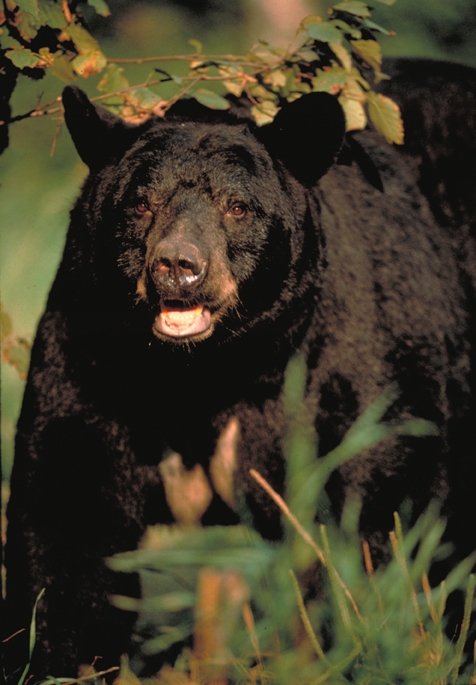What If I Meet a Black Bear That Wants to Eat Me?
When a black bear approaches, how can you tell the difference between a curious bear, one that wants to eat your food, and one that wants to eat you?
We don’t know. All are uncommon occurrences. Three quick stories will illustrate.
- In New Jersey, a bear followed a petite lady and her little dog. The lady fell down. The bear sniffed her and walked on.
- In Minnesota, a bear made several quick advances to get food a man was carrying until the man kicked the bear in the throat and the bear ran up a tree.
- Also in Minnesota, Tyson Crowder had no food when a predatory bear approached him in the BWCAW on September 14, 1987. The 7-year-old, 117-pound female black bear moved back and forth a few feet in front of him, stood up, grabbed his shoulder, and tried to drag him until people hit the bear with a canoe paddle. The same bear attacked Jeremy Cleveland the next day before his son hit the bear with a canoe paddle.
All 3 bears were similar in that they were calm, deliberate, and persistent. None showed bluster. None was angry, defensive, or highly motivated to attack. How easy is it to deter a predatory black bear? Any brand of pepper spray should deter a predatory bear as easily as it deters black bears from eating any other food. The same goes for other deterrents such as rocks, sticks, or a kick to the bear’s throat when it looks up. Predatory bears are extremely rare. Ely researchers have never met one in over 50 years. Across North America, only about 1 black bear in a million preys on someone, compared with 1 person in 18,000 murdering someone. In the BWCAW, these two predatory attacks were the only such attacks in the history of the BWCAW—covering over 40 million visitor days since 1964.
 |
 |
 |








